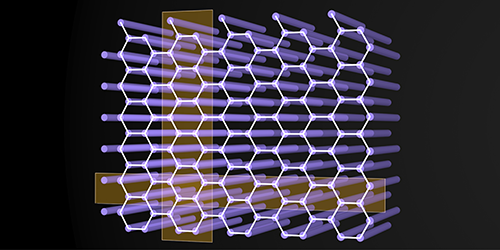Giving Graphene a New Edge
Graphene and graphene-like materials can host—at their edges—localized states whose properties can differ dramatically from those of bulk states. Three types of edge states have been established in these materials—zigzag, bearded, and armchair—named after their geometry. Now Daohong Song of Nankai University in China and collaborators have used a graphene-like photonic crystal to demonstrate the possibility of a fourth edge, called twig, with exotic topological features. The researchers suggest that twig edge states could exist in other honeycomb-lattice structures, broadening the options for realizing topologically protected energy transport via edge states in materials [1].
The result builds on the team’s earlier demonstration of a laser-based technique for “writing” an arbitrarily shaped array of waveguides in a crystal [2]. Guided by simulations, they designed a honeycomb structure with twig-shaped edges and predicted that such edges would host nontrivial states. They then realized the structure as a honeycomb lattice of waveguides with a 32-µm lattice spacing. Finally, they used a laser to couple light into the twig edge states and studied how the light propagated through the waveguides. The results show the twig edge states have both topological and “flat band” features—two ingredients that can give rise to intriguing phases of matter.
Song says that, together with the three previously identified edges, the twig edge forms a complete basis for describing all possible edge types in honeycomb lattices—any arbitrary edge can be described as a combination of those four types. As such, the new work could help in developing a general framework for describing edge states in graphene-like materials, which could be used to create and study new topological phases.
–Matteo Rini
Matteo Rini is the Editor of Physics Magazine.
References
- S. Xia et al., “Photonic realization of a generic type of graphene edge states exhibiting topological flat band,” Phys. Rev. Lett. 131, 013804 (2023).
- S. Xia et al., “Unconventional flatband line states in photonic Lieb lattices,” Phys. Rev. Lett. 121, 263902 (2018).




